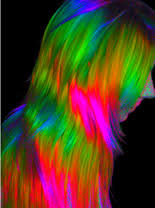Founded in December 2002 by experts in optics and non-destructive testing, Bossa Nova Technologies is specialized in the development of innovative non-destructive testing instruments for industrial applications. Strong expertise in laser ultrasound and polarization imaging have led Bossa Nova Technologies to develop sensors for various applications and technologies, ranging from cosmetic testing to defect detection in composite material.
We continually explore the application of innovative technologies through government or private R&D contract to enhance the performances of our instruments and develop new inspection techniques. We are interested in new partnership to expand the development of its technologies and introduce our products to new markets and applications.
Years of experience in mechanical/optical/electronics/software design coupled with a strong R&D background in lasers, optics and non-destructive testing make Bossa Nova Technologies the perfect solution provider.
Hair volumizing test
BOLERO is an imaging system that allows the reconstruction of the 3D volume of hair swatches. Based on
the acquisition of a sequence of contours, BOLERO delivers the 3D model of the hair swatch, permitting the simultaneous measurement of the hair swatch volume and the analysis of fly-aways
Applications of BOLERO range from claims substantiation and product efficacy for volumizing products to basic analysis of hair swatch volume and visual appearance.
The prototype is connected to a computer for data/image acquisition and processing. The software manages the acquisition of 36 contours and the image processing. The measurement time is 1min 45 s. The outputs of the system are the volume of the hair swatch in mm3, a percentage of the fly-away, a horizontal “slice” of the 3d model and the x,y,z point cloud (Figure 3).









 Follow us on Linkedin!
Follow us on Linkedin!